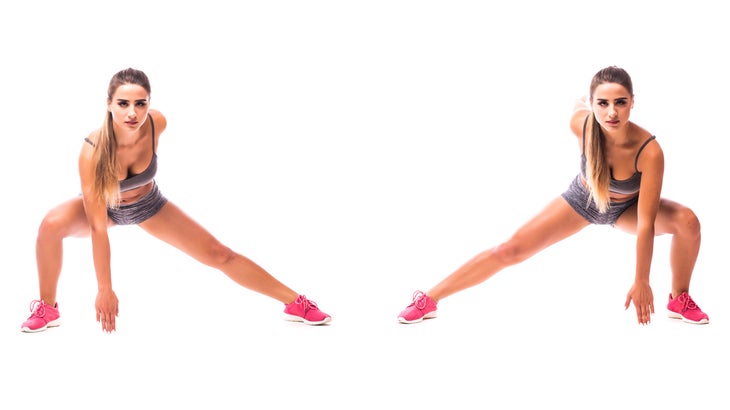Heading out the door? Read this article on the new Outside+ app available now on iOS devices for members! Download the app.

Not getting the most out of your glutes and thigh training? Have your lower-body gym efforts hit a plateau? Are you considering changing up your glutes and lower- body routine yet again in the hopes of finally achieving the sexy, lean, shapely, muscular and healthy look you’re after?
As essential as variation is for keeping your muscles shaping up and getting progressively stronger, don’t look for another workout just now unless you’ve been training your adductor muscles regularly. The adductors comprise a group of muscles on the inside of your thighs that may be considered one of the limiting factors in your glutes and thigh training.
Even though the names of the adductor muscle group – adductor magnus, longus and brevis, as well as the gracilis and pectineus – sound like characters in the plot to assassinate Julius Caesar in HBO’s Rome, training them as part of your lower- body workout just may be the missing ingredient in your lower-body efforts.
Why Adductor Training is Important
Well-trained adductors will greatly improve your deadlifts and squats, which translate into tighter glutes and more refined thigh muscles. Training your adductors will also improve your stamina and performance not only for workouts, but also for any number of daily tasks, whether it’s bounding up the stairs efficiently or picking something up off the floor or the bottom shelf at the grocery store.
Strong adductors can even help protect your knees against potential injury, whether from daily activities or strenuous running. And this means better, more impactful cardio. Finally, strong adductors improve your lower-back, core and hip stability, which are essential for everyday health and for fitness excellence.
How to Train Adductors
Generally, adductors train quite well in a relatively quick period of time. If you add just one of these adductor moves into your quadriceps workout (except for the plie squat, about which more to come), shooting for three to four sets of 10 repetitions per leg done in perfect form as the final move in your training, you should notice improvement in about one month. You’ll feel more stable and your squat, deadlift and leg-press strength will show increases, as will the subsequent results – most notably in your glutes and legs.
The best way to ensure continued success is to use a different adductor move each time you work your lower body. Keep in mind that maintaining proper form is critical, particularly if you use the standing adductor options. You don’t want to rotate your hips and spine as you do the reps, since this can lead to lumbar spine problems down the road. If you find yourself over-rotating, it’s a likely sign that the resistance you’re using is much too great for your level of development.
So, reduce the resistance – use a less powerful resistance band or lighter Body Bar or less weight on the weight stack.
The plié squat, just as the side lunge, is an excellent move for engaging both adductor muscles and the larger quadriceps group. However, the primary emphasis with the plié squat will be on your quadriceps or front thighs, and only secondarily on your adductors. If your workout includes plié squats, simply consider adding only one or two sets (10 reps each per leg) of additional adductor work from our exercise list at the end of your lower-body routine. Rest about 30 to 45 seconds between sets.